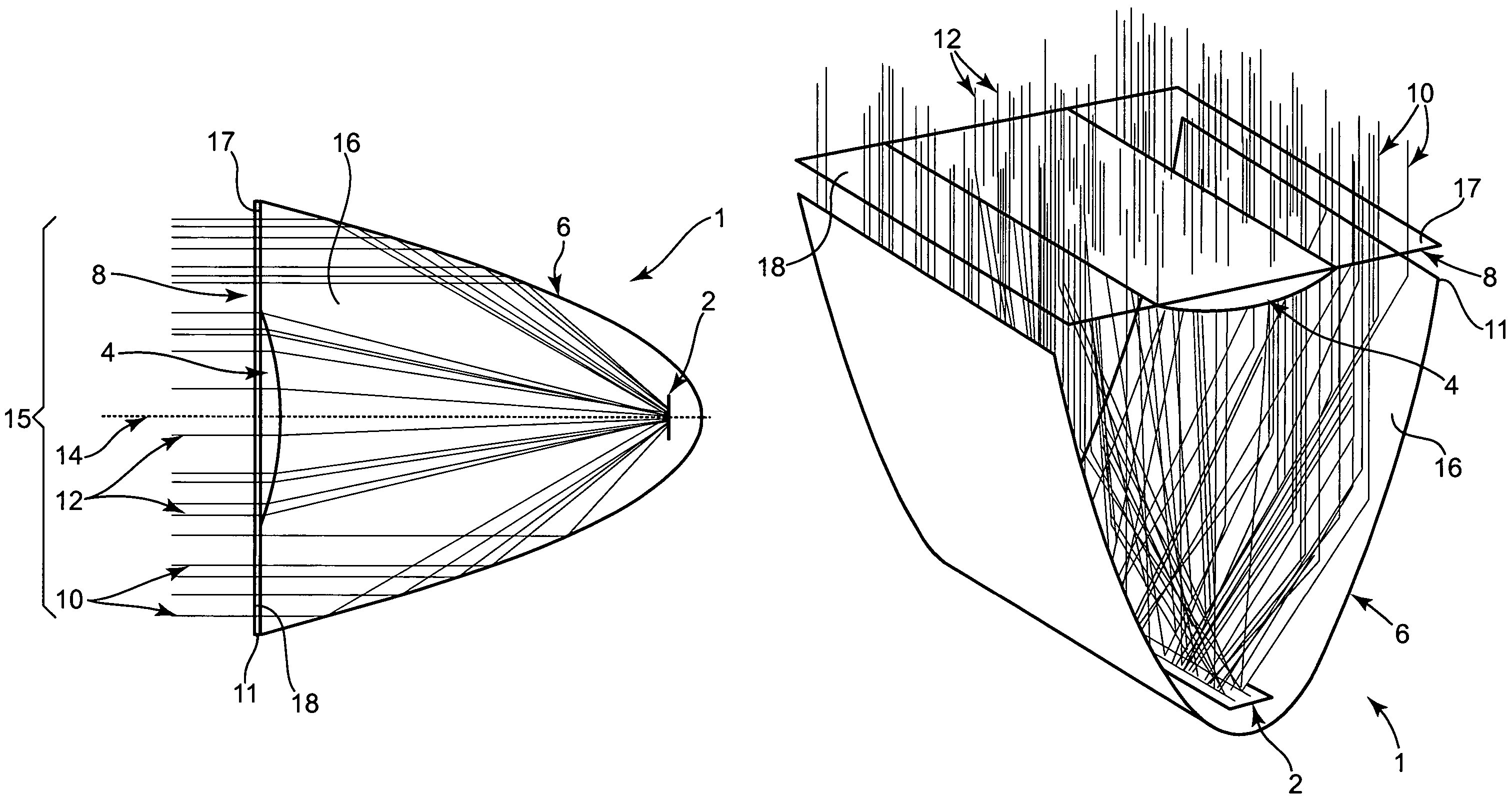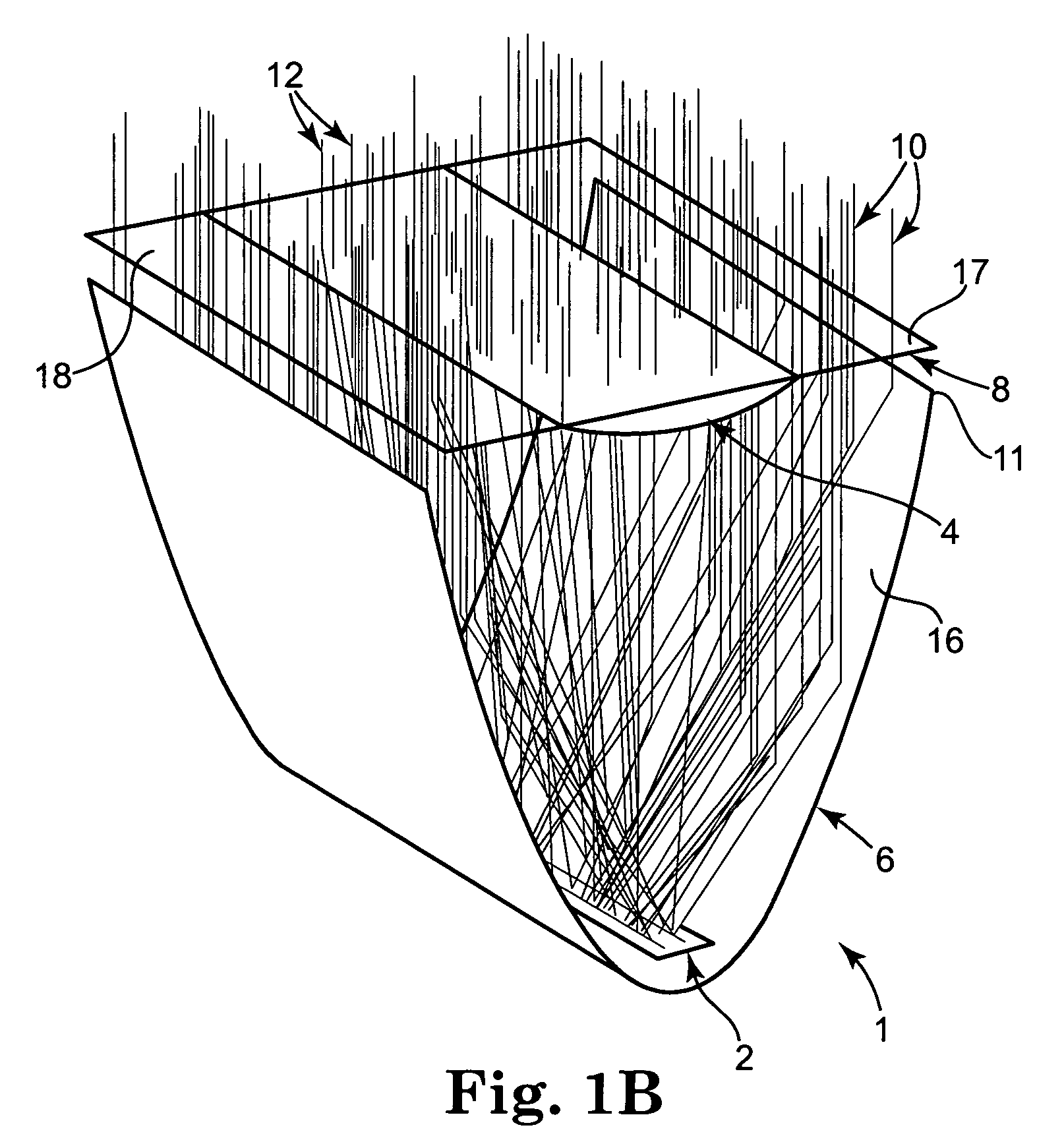Hybrid primary optical component for optical concentrators
a technology of optical concentrators and primary optical components, applied in the field of optical concentrator configurations, can solve the problems of large, high-quality fresnel lenses as conventionally used, prohibitively expensive medium-scale applications such as commercial rooftop systems, and the loss of optical concentrators, etc., and achieve the effect of not being suitable by itself for certain articulating concentrators
- Summary
- Abstract
- Description
- Claims
- Application Information
AI Technical Summary
Benefits of technology
Problems solved by technology
Method used
Image
Examples
Embodiment Construction
[0031]The embodiments of the present invention described below are not intended to be exhaustive or to limit the invention to the precise forms disclosed in the following detailed description. Rather a purpose of the embodiments chosen and described is so that the appreciation and understanding by others skilled in the art of the principles and practices of the present invention can be facilitated.
[0032]FIGS. 1a, 1b, and 7 show one preferred embodiment of a hybrid primary optical component 1 of this invention. For purposes of illustration optical component 1 is in the form of a line concentrator. The full aperture 15 of component 1 spans the width (in the case of a line concentrator) or diameter (in the case of a point concentrator) of the light receiving end 11 of a reflective element in the form of a bottom focusing dish 6. The hybrid primary optical component 1 includes a cover 8 fitted onto light receiving end 11. Together, the cover 8 and dish 6 provide a protective housing for...
PUM
 Login to View More
Login to View More Abstract
Description
Claims
Application Information
 Login to View More
Login to View More - R&D
- Intellectual Property
- Life Sciences
- Materials
- Tech Scout
- Unparalleled Data Quality
- Higher Quality Content
- 60% Fewer Hallucinations
Browse by: Latest US Patents, China's latest patents, Technical Efficacy Thesaurus, Application Domain, Technology Topic, Popular Technical Reports.
© 2025 PatSnap. All rights reserved.Legal|Privacy policy|Modern Slavery Act Transparency Statement|Sitemap|About US| Contact US: help@patsnap.com



